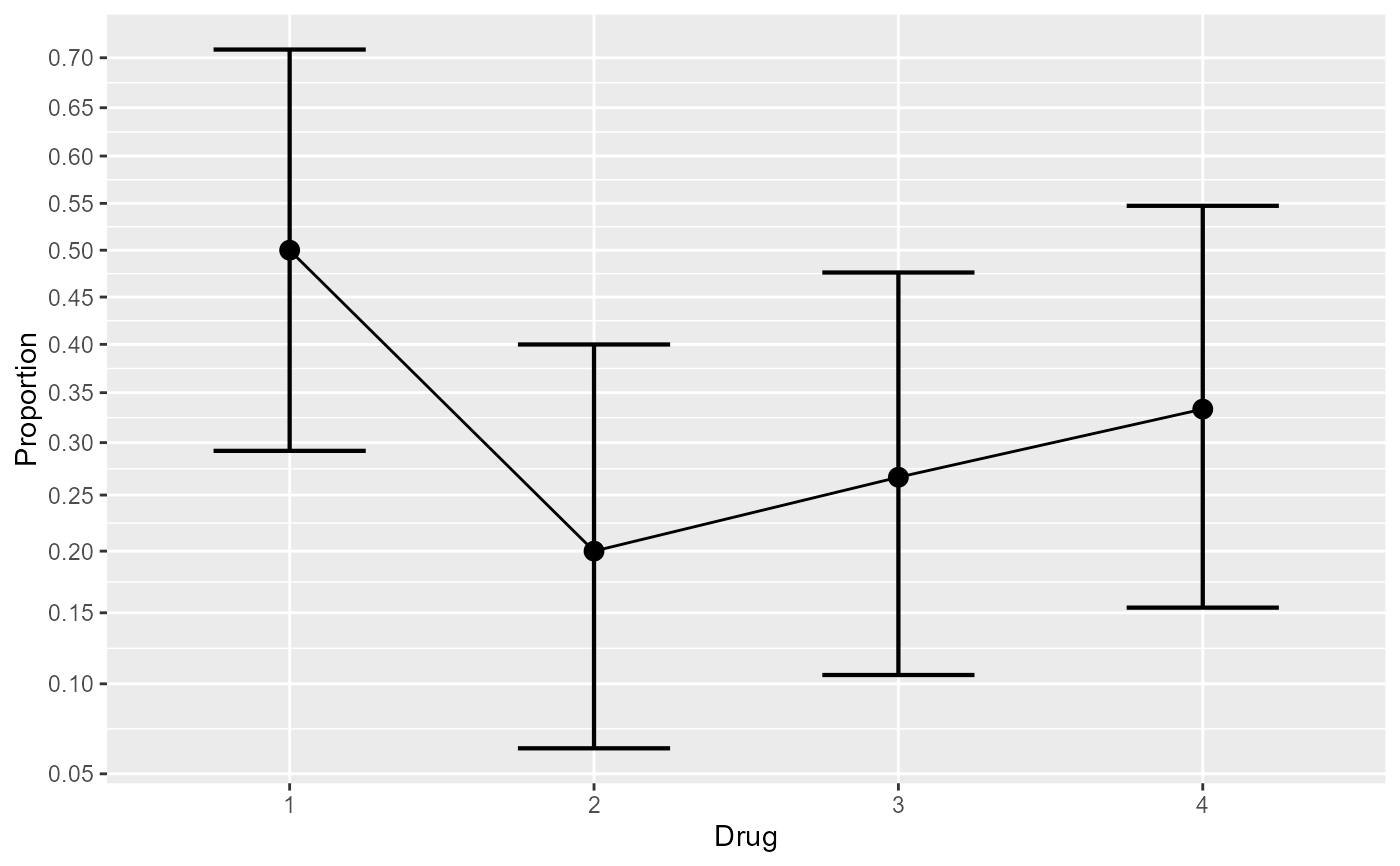These are the data from the third example reported in (Laurencelle and Cousineau 2023) . It shows fictitious data with regards to the proportion of patients suffering delirium tremens as a function of the drug administered (cBau, eaPoe, R&V, Placebo). The design is a within-subject design with 4 measurements (order of administration randomized).
ArticleExample3Format
An object of class data.frame.
Source
References
Laurencelle L, Cousineau D (2023). “Analysis of proportions using arcsine transform with any experimental design.” Frontiers in Psychology, 13, 1045436. doi:10.3389/fpsyg.2022.1045436 .
Examples
library(ANOPA)
# the ArticleExample3 data shows an effect of the drug administered on the
# proportion of participants who had an episode of delirium tremens
ArticleExample3
#> cBau eaPoe RnV Placebo
#> 1 1 0 0 0
#> 2 1 1 1 1
#> 3 0 0 0 0
#> 4 1 1 0 0
#> 5 0 0 0 0
#> 6 0 0 0 0
#> 7 1 0 1 1
#> 8 0 0 0 0
#> 9 1 1 0 1
#> 10 0 0 0 0
#> 11 1 0 0 0
#> 12 1 1 1 1
#> 13 0 0 0 0
#> 14 0 0 0 0
#> 15 1 0 0 0
#> 16 0 0 1 1
#> 17 0 0 0 0
#> 18 0 0 0 1
#> 19 1 0 1 0
#> 20 1 0 0 1
#> 21 0 0 0 0
#> 22 1 0 0 0
#> 23 0 1 0 0
#> 24 1 0 1 1
#> 25 1 0 1 0
#> 26 0 0 0 1
#> 27 0 0 0 0
#> 28 0 0 1 0
#> 29 1 0 0 0
#> 30 1 1 0 1
# perform an anopa on this dataset
w <- anopa( cbind(cBau,eaPoe,RnV,Placebo) ~ ., ArticleExample3, WSFactors = "Drug(4)")
#> ANOPA::fyi: Here is how the within-subject variables are understood:
#> Drug Variable
#> 1 cBau
#> 2 eaPoe
#> 3 RnV
#> 4 Placebo
# We finish with post-hoc Tukey test
e <- posthocProportions( w )
#> Not yet programmed...
# a small plot is *always* a good idea
anopaPlot(w)
